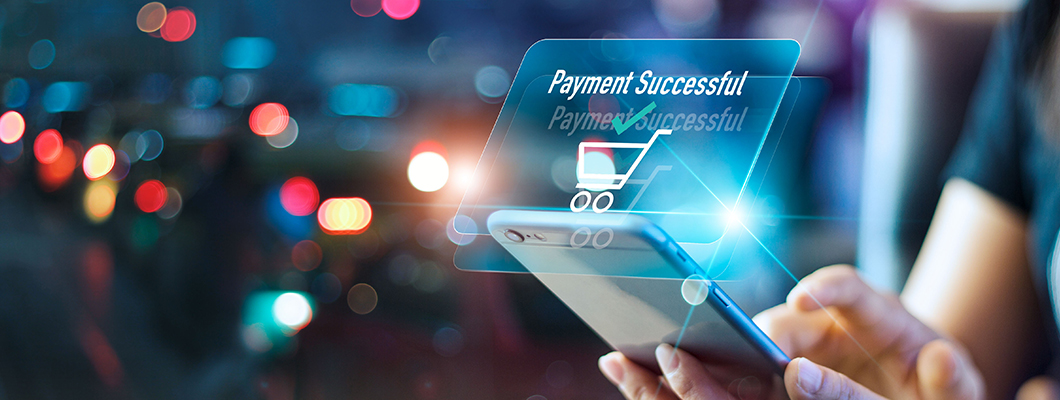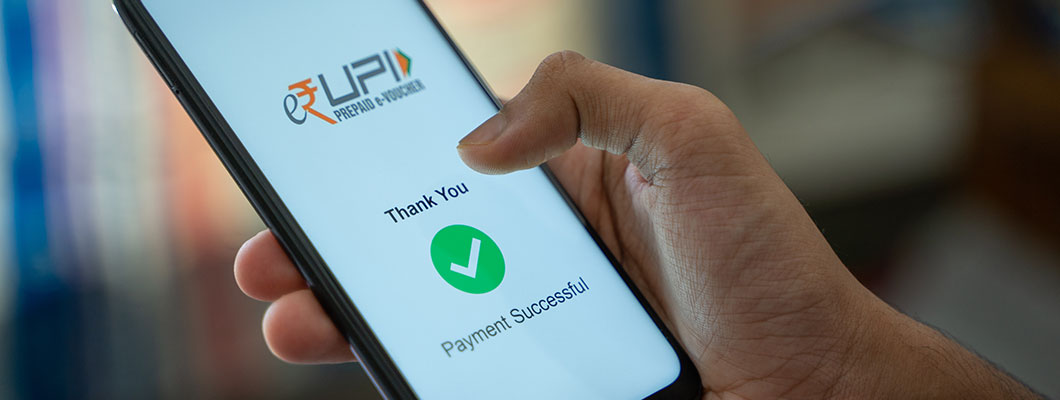
Digital Payments: The Right Channel to Opt for!
Posted on Saturday, April 23rd, 2022 | By IndusInd Bank
In recent years, we’ve witnessed rapid adoption of technology across the globe, and India as a country has led this transformation. Businesses within the public and private sectors and government departments are embracing digital transformation at a tremendous pace. This is being done by leveraging emerging technologies, collectively called Industry 4.0 or deep tech, including automation and tools for data analytics.
As a sector, Financial Services has been at the forefront of transformation, spearheaded by fintech companies and government-led initiatives. The mere convenience of transacting seamlessly from the comfort of homes and offices has brought about a digital shift, with most consumers preferring to transact using online platforms. This has resulted in unprecedented growth in the digital payment landscape.
A Research and Markets report that surveyed 800 million Indian mobile payment users claim that the Indian digital payments industry, which stood at INR 2,153 trillion in 2020, will grow at a 27% CAGR to reach INR 7,092 trillion by FY25.
Popular Digital Payment Channels
Let us now go over some of the most popular digital payment channels and then examine which could be the right one to opt for, basis the benefits each one offers you.
Bank Cards
Nupur-TanejaBank Cards that include debit, credit, and prepaid cards continue to be the most preferred payment method for customers across age groups. This is purely due to the better convenience, control, flexibility, and security they offer to the users. While credit cards have their unique features of allowing payments basis credit eligibility, almost all cards come with various freebies and discounts from participating merchants and allow cash withdrawal from ATMs. Bank cards, in general, arguably the most secure digital payment method, can be used for making online and offline payments. Credit cards allow the users to build credit ratings that can help them in availing of loans and credit facilities.
Internet Banking
Internet Banking – aka online banking or e-banking – allows customers to undertake all transactions and other financial activities through a bank’s online portal. In other words, all transactions done in an offline mode or through conventional banking channels can be done online through internet banking. In addition to making payments, Internet banking allows you to customize your security parameters like maximum limit per transaction or day or the type of channel, etc., to avail of services like requesting services that used to `be done through a physical banking mode.
Unified Payment Interface -UPI
One of the most innovative and revolutionary technology platforms developed in India – by the National Payments Corporation of India -NPCI, Unified Payment Interface -UPI has become a household term, especially in urban areas. Most mobile payment applications on UPI allow several banking services like instant money transfers between bank accounts, person-to-person payments, and payments to merchants, among many others, on a single platform. UPI allows you to access different bank accounts from one app, while multiple apps can be linked to the same bank account. A UPI-enabled app allows you to undertake a plethora of activities such as checking your bank account balance, sending and receiving money, adding more bank accounts, inviting contacts, and keeping track of daily expenses.
UPI123PAY
This is a new UPI-based service launched by the RBI to enable feature phone users to undertake mobile banking transactions, which until recently was limited to smartphone users. Banking customers can avail of UPI123PAY in a three-step method in four different ways. The service is envisaged to bring people residing across rural areas and regions with poor or no internet connectivity within the ambit of financial inclusion and allow them to conduct digital payments as done by those who have an internet connection.
Mobile Banking
Most banks have dedicated mobile banking applications that you can download from application stores like – Google Play Store, Apple Store, and Microsoft Store and use them to perform almost all financial transactions through a smartphone or tablet. Mobile banking allows you to conduct almost all activities that can be done through internet banking and provide most features available in mobile payment applications as well!
How to Choose The Right Channel?
While the digital payment methods, in general, are fast, in some cases instant, and convenient to use, the benefits may vary from channel to channel, and each channel has specialties that may not be available in another channel. However, the decision on which digital payment channel is right for you will be influenced by your preference for the benefits explained under each channel, along with the factors, among others, listed below:
- Connectivity – The internet connection is a prerequisite for using digital payment channels except for cards and UPI123PAY
- Education – The user is supposed to have some primary education to be able to use digital payment methods. The more educated will be able to opt for more sophisticated channels.
- Security – Digital payment channels may be more prone to fraudulent activities than non-digital forms, and less tech-savvy users may prefer more secure channels or vice-versa.
Concluding Note
We mainly made individual and commercial payments through cash a few years back, and only big companies and government departments used cheques. Later on, cheques followed by bank transfers became popular thanks to a change in user attitude, tax, and other regulatory provisions.
The emergence of digital technology brought internet banking to the fore, and smartphones replicated internet banking in the form of mobile banking. Then came fintech to revolutionize the banking and payment systems further through payment apps. India improvised it through UPI, ainly due to the demonetization introduced by the Indian government in 2016. The Ministry of Electronics and IT has noted that the volume of digital payments in India has increased by 33% year-on-year from 7,422 crores during the financial year FY 2021-2022, up from 5,554 crore transactions seen in FY 2020-21.
Digital payment apps have made financial transactions more accessible than ever before. One must use these apps diligently and adhere to all kinds of security protocols to reap the maximum benefits that they offer. Now that you have a clearer picture of the various digital payment platforms, you can easily choose the right digital payment channel. We believe UPI as a mode of payment is a step ahead of the rest.
Disclaimer: The information provided in this article is generic in nature and for informational purposes only. It is not a substitute for specific advice in your own circumstances. Hence, you are advised to consult your financial advisor before making any financial decision. IndusInd Bank Limited (IBL) does not influence the views of the author in any way. IBL and the author shall not be responsible for any direct/indirect loss or liability incurred by the reader for taking any financial decisions based on the contents and information.



 Offers
Offers Rates
Rates Debit Card Related
Debit Card Related Credit Card Related
Credit Card Related Manage Mandate(s)
Manage Mandate(s) Get Mini Statement
Get Mini Statement
 categories
categories Bloggers
Bloggers Blog collection
Blog collection Press Release
Press Release
